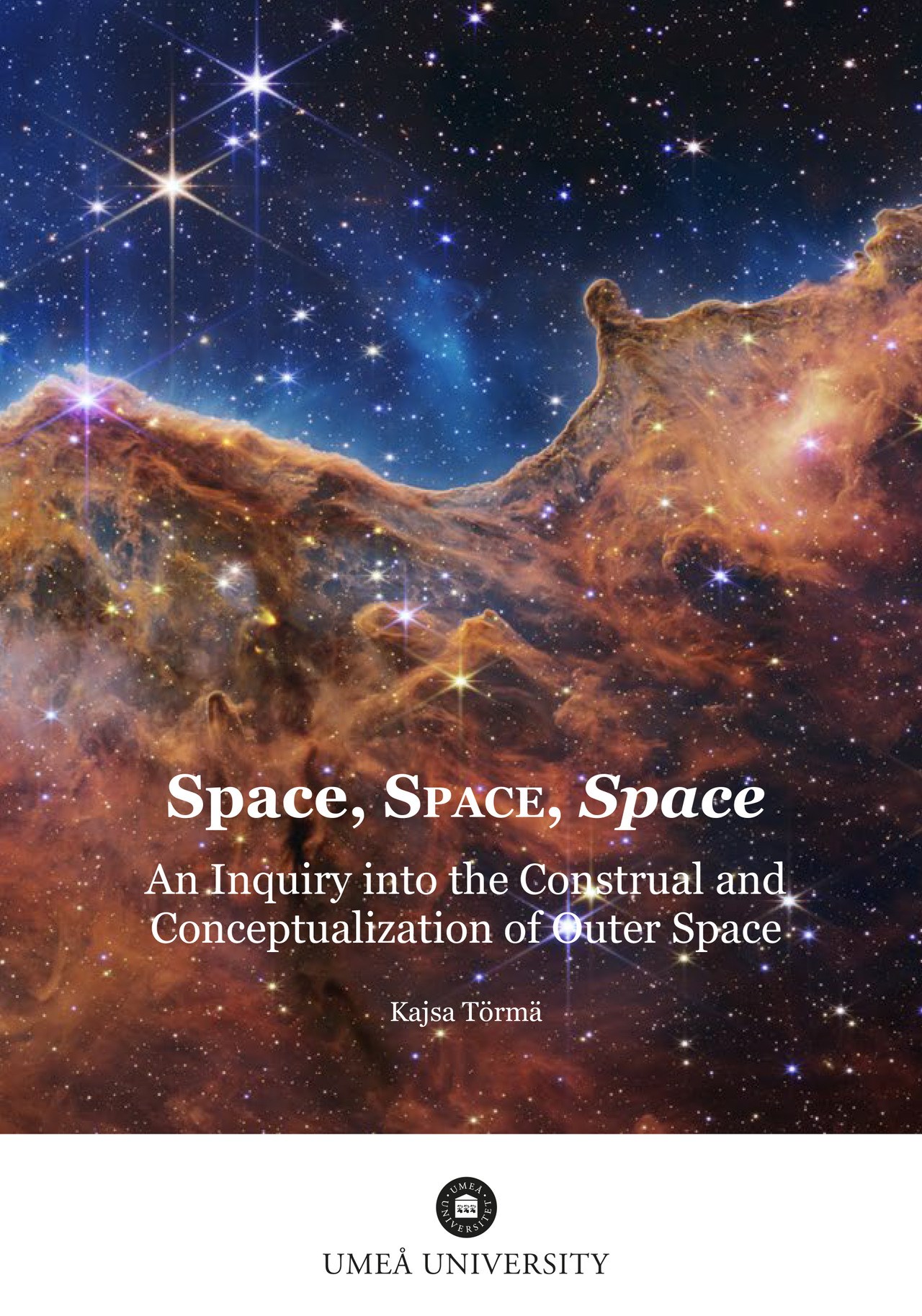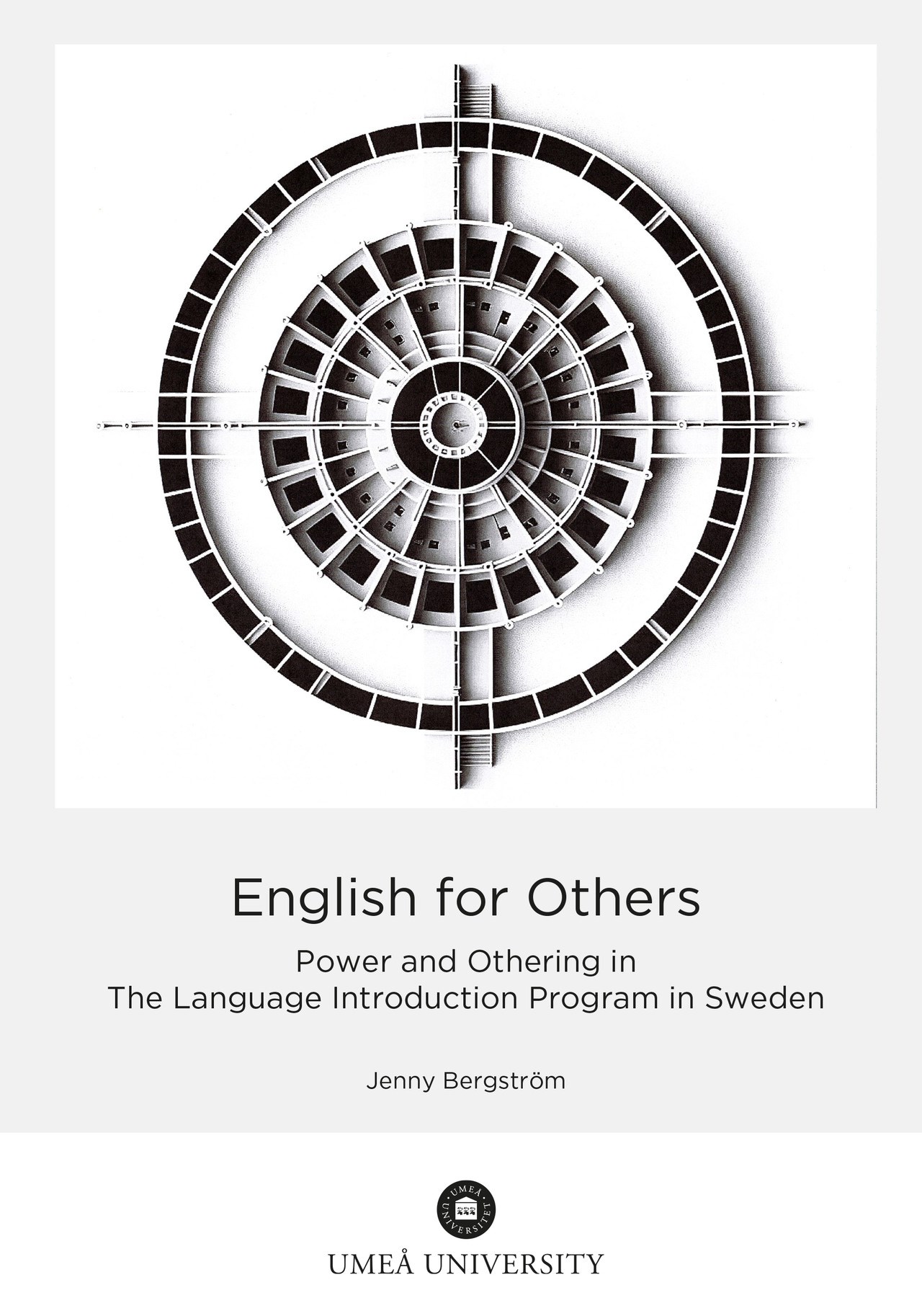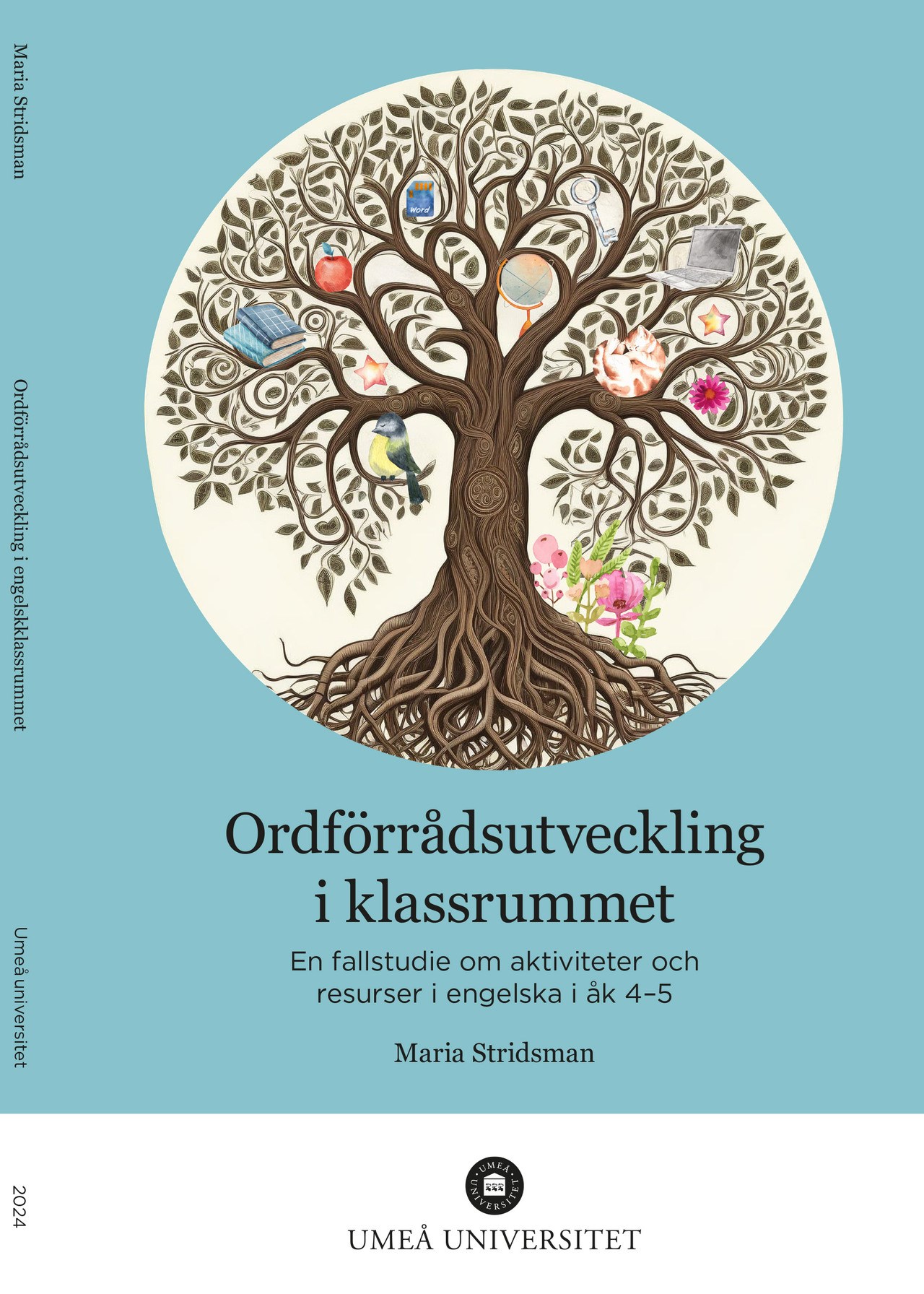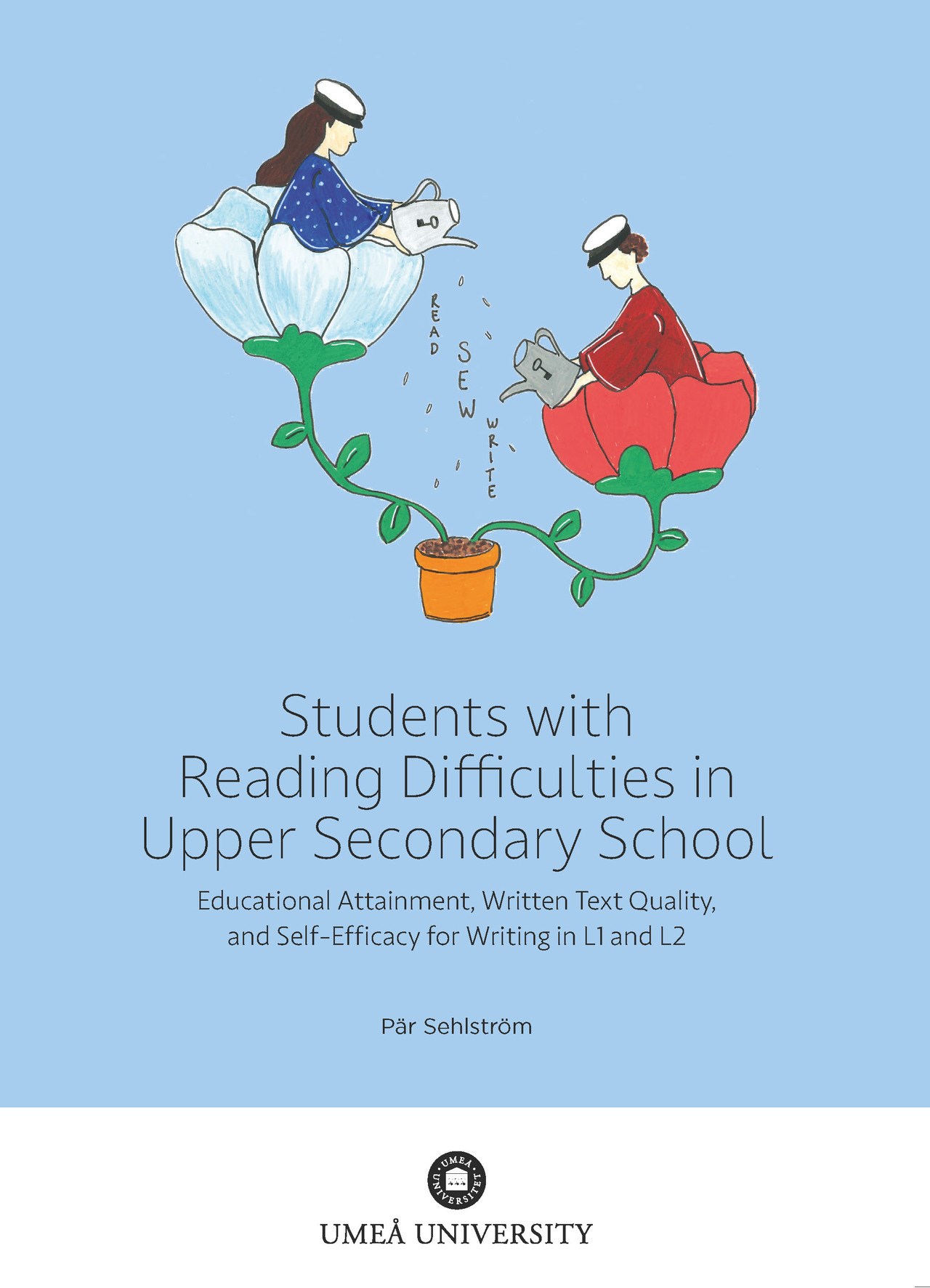På denna sida hittar du information om de böcker (företrädesvis avhandlingar) som publicerats i Institutionen för språkstudiers skriftserie. De senast utgivna böckerna presenteras mer utförligt; i listan nedan leder länkarna till DiVA-posterna. /On this page you will find information about the books (primarily dissertations) published in the department’s series. The most recently published books are presented in more detail; the links in the list below lead to the relevant DiVA-post.
Redaktör för skriftserien: Maria Lindgren Leavenworth
Böcker publicerade i serien säljs via eddy.se.
61. Kajsa Törmä. Space, space, space: An Inquiry into the Construal and Conceptualization of Outer Space. 2025. Avhandling i språkvetenskap/Dissertation in Linguistics.

A growing body of humanities and social science research on outer space recognizes that outer space is not just a physical place, but a place shaped by human knowledge, interaction, and narratives. This thesis, situated within the theoretical framework of Cognitive Linguistics, explores how outer space is conceptualized and linguistically construed. The results show that language about space is firmly rooted in embodied experiences. Even in an environment where fundamental physical principles such as gravity no longer apply embodied experience influence how people think and talk. Furthermore, outer space is also understood through personifications and metaphors that draw upon familiar, embodied experiences, offering ways to make sense of abstract and unfamiliar places in both conventional and creative ways. Finally, the results encompass conceptualizations specific to the United States' cultural context, influenced by the Cold War, colonial expansion, and economic or political discourse on space exploration and tourism. Studying the patterns of language and thought can thus provide insights into how people understand, engage with, and imagine outer space now and in the future.
60. Jenny Bergström. English for Others: Power and Othering in The Language Introduction Program in Sweden. 2025. Avhandling i språkdidaktik/Dissertation in Language Teaching and Learning.

This thesis investigates English-language education at The Language Introduction Program (LIP) in Sweden: an individual transit program for newly arrived migrant students at upper-secondary school level, designed to ensure a fast transition to further education or the job market. The results show that power structures limit the ability of teachers to collaborate, evaluate, and develop their teaching practices. Interwoven in all these structures are monolingual language ideologies and perceptions of LIP students as lacking prior knowledge and capabilities. Furthermore, the thesis shows that students’ first languages (L1s) are not used as a resource when learning English at the LIP, and that the importance of proficiency in English is rarely discussed with LIP students. Instead, the local language (Swedish) is prioritized by the organization. Through governmentality, lack of proficiency in English is a gatekeeper to future transitions for LIP students. All these factors in combination position English as a school subject at LIP of less priority for LIP students, disfavoring English both in regard to resources and support.
59. Maria Stridsman. Ordförrådsutveckling i klassrummet: En fallstudie om aktiviteter och resurser i engelska i åk 4–5. 2024. Avhandling i språkdidaktik/Dissertation in Language Teaching and Learning.

This thesis examines vocabulary instruction in English as a foreign language within a primary school classroom, providing insights into how textbooks and other resources are used when teaching young learners. The research aims to deepen our understanding of vocabulary instruction in the middle years of primary school by observing a class of 10–11-year-old pupils and their teacher over nine weeks of English lessons. The research addresses the following questions: 1. What conditions for vocabulary development are provided by the pedagogical materials used? 2. How are different aspects of vocabulary addressed in English teaching activities in the middle years of primary school? The findings suggest a more systematic approach to vocabulary in teaching materials and highlight the importance of recognizing its central role in language development within the syllabus for English and the design of educational materials. The results have implications for developing elementary foreign language instruction, informing teacher education, and guiding the development of teaching materials.
58. Pär Sehlström. Students with Reading Difficulties in Upper Secondary School: Educational Attainment, Written Text Quality, and Self-Efficacy for Writing in L1 and L2. Avhandling i pedagogiskt arbete/Dissertation in Educational Work.

The dissertation investigates the role reading and writing may play in educational attainment, the text quality of students with reading difficulties (RD), and relations between reading, self-efficacy for writing (SEW), and text quality in Swedish (L1) and English (L2). Findings indicate that especially writing, but also reading, may play an important role in educational attainment, and they underscore the importance of including writing and reading instruction in foundation subjects (and syllabuses) in order to achieve better attainment. Results reveal that argumentative writing can be challenging for many upper secondary students. Furthermore, outcomes highlight the need for support in both L1 and L2 writing (including SEW) to SB1year-students with RD. Finally, findings suggest that groups with reading difficulties may need macro level support (e.g., coherence) as well as linguistic support (e.g., spelling, grammar, and cohesion).
57. Elisabeth Nilsson. Språkbedömningspraktiker i förskoleklass: Lärares arbete med kartläggningsmaterialet Hitta språket. 2024. Avhandling i språkdidaktik/Dissertation in Language Teaching and Learning
56. Ekaterina Zmyvalova. Sámi children’s Right to Learn their Language: Indigenous Experiences and Law in the Russian School Context. 2024. Avhandling i samiska studier (utbildingsvetenskaplig inriktning)/Dissertation in Sami Studies (Education)
55. Malin Isaksson, Florence Sisask & Maria Helena Svensson (éds.), Le repos de la guerrière: Textes en l’honneur de Barbro Nilsson Sharp. 2023.
54. Ej utkommen/Not published
53. David Kroik. The Construction of Spaces for Saami Langauge Use: Language Revitalisation in Educational Contexts. 2023. Avhandling i språkdidaktik/Dissertation in language teaching and learning
52. Juanita Vélez Olivera, Traducción y creación. Tres poetas traductores colombianos del siglo XX: Jaime Tello, José Manuel Arango y Harold Alvarado Tenorio. 2023. Avhandling i de moderna språkens litteratur, med inriktning mot spanska/Dissertation in Spanish literature
51. Andreas Nuottaniemi, Flerspråkighetens gränser: Språkdidaktik på (o)jämlik grund i migrationernas tid. 2023. Avhandling i språkdidaktik/Dissertation in language teaching and learning
Avhandlingen är utgiven av bokförlaget h:ström—läs mer här./The dissertation is publihed by h:ström publishers—you can read more here.
50. Ej utkommen/Not published.
49. Erika Sturk, Writing across the Curriculum in Compulsory School in Sweden. 2022[MLL1]. Avhandling i språkdidaktik/Dissertation in language teaching and learning
48. Daniel Kjellander, Ambiguity at Work: Lexical Blends in an American English Web News Context. 2022. Avhandling i språkvetenskap/Dissertation in linguistics
47. Justin Zelime, Contrasting Language-in-Education Policy Intentions, Perceptions and Practice: The Use of English and Kreol Seselwa in the Seychelles. Diss. 2022.
46. Baran Johansson, Two Languages, Two Scripts: Bilingual and Biscriptal Children with and without Reading Difficulties Read and Write in Persian (L1) and Swedish (L2). Diss. 2022.
45. Elena Glotova, Soundscapes in Nineteenth-Century Gothic Short Stories. Diss. 2021.
44. Spoke Wintersparv, Teaching the Reading Experience: Upper Secondary Teachers’ Perspectives on Aesthetic Aspects of Literature Teaching. Diss. 2021.
43. Nuno Marques, Atmospheric and Geological Entanglements: North American Ecopoetry and the Anthropocene. Diss. 2020.
42. Ej utkommen/Not published.
41. Moa Sandström, Dekoloniseringskonst. Artivism i 2010-talets Sápmi. Diss. 2020.
40. Kristina Belančić, Language Policy and Sámi Education in Sweden: Ideological and Implementational Spaces for Sámi Language Use. Diss. 2020.
39. Monica Egelström, Samma lärare – olika praktiker? En studie av literacy och meningsskapande i grundskolans tidiga ämnesundervisning. Diss. 2019.
38. Anita Malmqvist & Asbjörg Westum (red.), Nya familjekonstellationer – nya benämningar? Familjen och dess medlemmar i finskan, ryskan, svenskan och tyskan. 2019.
37. Elena Rassokhina, Shakespeare’s Sonnets in Russian: The Challenge of Translation. Diss. 2017.
36. Yvonne Knospe, Writing in a Third Language. A Study of Upper Secondary Students’ Texts, Writing Processes and Metacognition. Diss. 2017.
35. Parvin Gheitasi, Say It Fast, Fluent and Flawless: Formulaicity in the Oral Language Production of Young Foreign Language Learners. Diss. 2017.
34. Mai Trang Vu, Logics and Politics of Professionalism: The Case of University English Language Teachers in Vietnam. Diss. 2017.
33. Sergej Ivanov, A Transnational Study of Criticality in the History Learning Environment. Diss. 2016.
32. Godelinde Perk, Julian, God, and the Art of Storytelling: A Narrative Analysis of the Works of Julian of Norwich. Diss. 2016.
31. Karyn Sandström, Peer Review Practices of L2 Doctoral Students in the Natural Sciences. Diss. 2016.
30. Berit Aronsson, Efectos pragmáticos de transferencias prosódicas del sueco al español L2: Implicaciones para la clase de español lengua extranjera. Diss. 2015.
29. Hilda Härgestam Strandberg, Articulable Humanity: Narrative Ethics in Nuruddin Farah’s Trilogies. Diss. 2016.
28. James Barrett, The Ergodic Revisited: Spatiality as a Governing Principle of Digital Literature. Diss. 2015.
27. Hanna Outakoski, Multilingual Literacy Among Young Learners of North Sámi: Contexts, Complexity and Writing in Sápmi. Diss. 2015.
26. Eva Lindgren & Janet Enever (eds.), Språkdidaktik: Researching Language Teaching and Learning. 2015.
25. Janet Enever, Eva Lindgren & Sergej Ivanov (eds.), Conference Proceedings from Early Language Learning: Theory and Practice. 2014.
24. Maria Levlin, Lässvårigheter, språklig förmåga och skolresultat i tidiga skolår – en undersökning av 44 elever i årskurs 2 till 3. Diss. 2014.
23. Anna Maria Hipkiss, Klassrummets semiotiska resurser. En språkdidaktisk studie av skolämnena hem- och konsumentkunskap, kemi och biologi. Diss. 2014.
22. Moa Matthis, “Take a Taste”: Selling Isak Dinesen’s Seven Gothic Tales in 1934. Diss. 2014.
21. Ingalill Gustafsson, www.lektion.se – din kollega på nätet. En studie av lärares lektionsförslag i skolämnet svenska (skrivande)[MLL2] [MLL3] . Lic. 2013.
20. Katarina Kärnebro, Plugga stenhårt eller vara rolig? Normer om språk, kön och skolarbete i identitetsskapande språkpraktiker på fordonsprogrammet. Diss. 2013.
19. Helena Eckeskog, Varför knackar han inte bara på? En studie om arbete med läsförståelse i åk 1–2. Lic. 2013.
18. Tove Solander, “Creating the Senses”: Sensation in the Work of Shelley Jackson. Diss. 2013.
17. Misuzu Shimotori, Conceptual Contrasts: A Comparative Semantic Study of Dimensional Adjectives in Japanese and Swedish. Diss. 2013.
16. Stephanie Fayth Hendrick, Beyond the Blog. Diss. 2012.
15. Nicklas Hållén, Travelling Objects: Modernity and Materiality in British Colonial Travel Literature about Africa. Diss. 2011.
14. Mareike Jendis, Anita Malmqvist & Ingela Valfridsson (Hrsg.), Text im Kontext 9. Beiträge zur 9. Arbeitstagung schwedischer Germanisten, 7.–8. Mai 2010, Umeå. 2011.
13. Anette Svensson, A Translation of Worlds: Aspects of Cultural Translation and Australian Migration Literature. Diss. 2010.
12. Heidi Hansson, Maria Lindgren Leavenworth & Lennart Pettersson (red.), Regionernas bilder. Estetiska uttryck från och om periferin. 2010.
11. Van Leavenworth, The Gothic in Contemporary Interactive Fictions. Diss. 2010.
10. Niklas Torstensson, Judging the Immigrant: Accents and Attitudes. Diss. 2010.
9. Maria Lindgren Leavenworth, The Second Journey: Travelling in Literary Footsteps. 2010.
8. Gregor von der Heiden, Gespräche in einer Krise. Analyse von Telefonaten mit einem RAF-Mitglied während der Okkupation der westdeutschen Botschaft in Stockholm 1975. Diss. 2009.
7. Therese Örnberg Berglund, Making Sense Digitally: Conversational Coherence in Online and Mixed-Mode Contexts. Diss. 2009.
6. Per Ambrosiani (ed.), Swedish Contributions to the Fourteenth International Congress of Slavists (Ohrid, 10–16 September 2008). 2009.
5. Ingela Valfridsson, Nebensätze in Büchern und Köpfen. Zur Bedeutung der Begriffsvorstellungen beim Fremdsprachenerwerb. Diss. 2009.
4. Dan Olsson, „Davon sagen die Herren kein Wort“. Zum pädagogischen, grammatischen, und dialektologischen Schaffen Max Wilhelm Götzingers (1799–1856). Diss. 2009.
3. Dorothea Liebel, Tageslichtfreude und Buchstabenangst. Zu Harry Martinsons dichterischen Wortbildungen als Übersetzungsproblematik. Diss. 2009.
2. Julian Vasquez (ed.), Actas del Simposio Internacional “Suecia y León de Greiff (1895–1976)”. 2008.
1. Elena Lindholm Narváez, ‘Ese terrible espejo’. Autorrepresentación en la narrativa sobre el exilio del Cono Sur en Suecia. Diss. 2008.